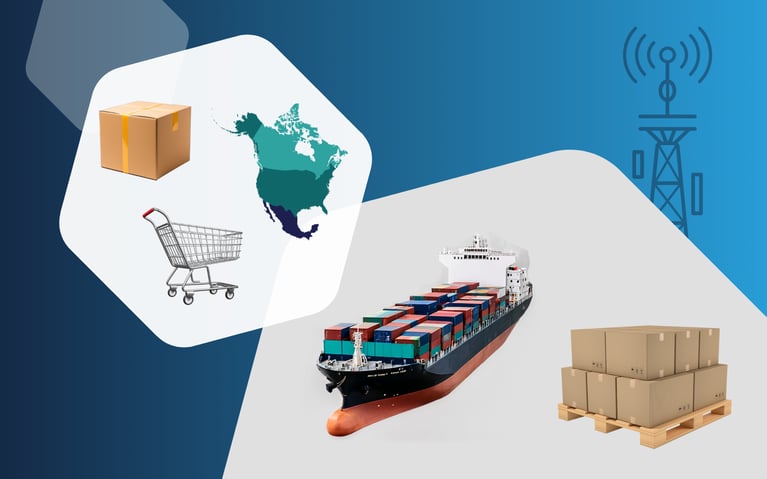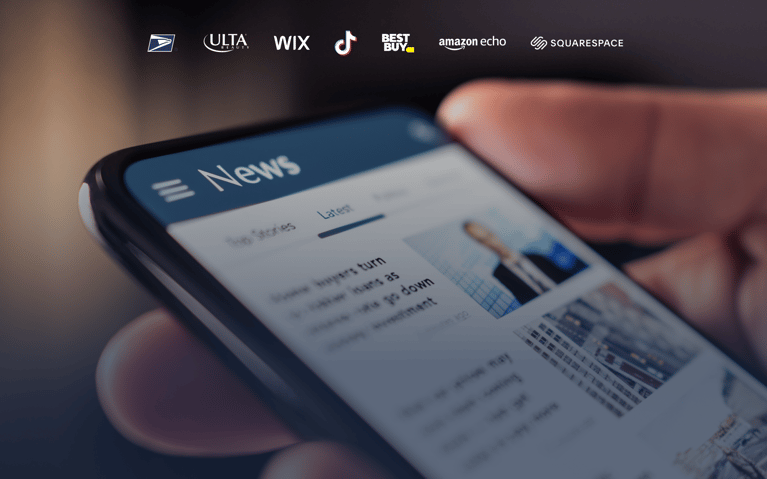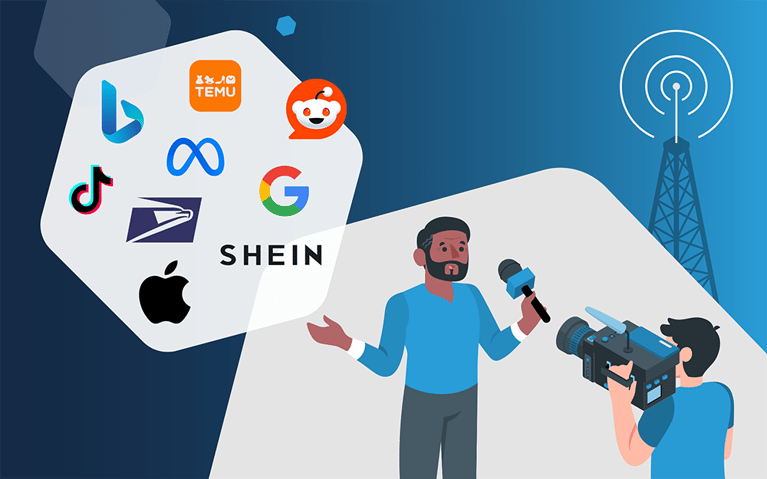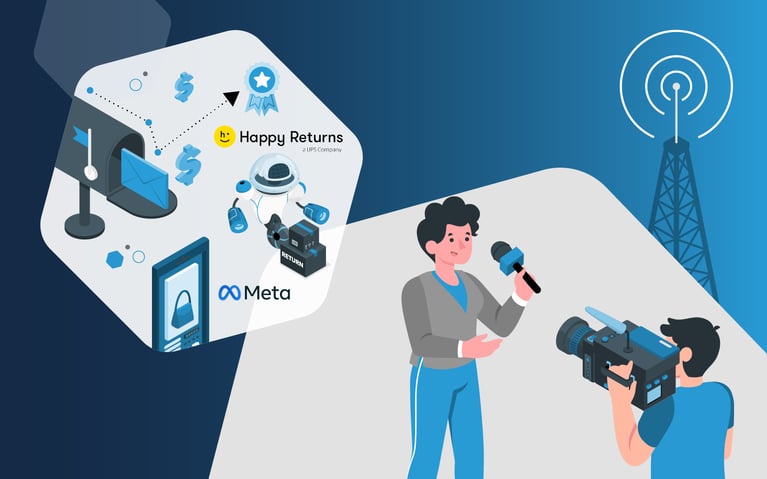In this week's retail news, Amazon plans to expand its Haul marketplace to several European countries later this year as a way to compete with low-cost direct-from-China marketplaces. Several other platforms are also planning new features and expansions, including TikTok, eBay and YouTube. Unfortunately, there has been another round of layoffs at places like Commercetools and Google.
Stay tuned for the latest commerce and retail updates in our bi-monthly blog.
Commerce chronicles highlights:
- Amazon takes Haul global
- Saying goodbye to TikTok's Creator Marketplace
- eBay updates platform to include two key features
- Layoffs continue throughout the industry
- Salesforce plans to rely on AI gents instead of hiring new engineers
- YouTube set to launch a major redesign of its TV app
- Meta plans to debut standalone AI app
Amazon takes Haul global
While Amazon's Haul, its bargain marketplace, was launched in the U.S. in November, the company plans to expand its service to European countries later this year. Many experts see the move to take Haul global as a way for Amazon to compete with low-cost direct-from-China marketplaces like Temu and Shein.
Business implications for Amazon's global Haul expansion
Amazon's decision to take Haul global is wise, especially with the rise of low-cost marketplaces like Temu and Shein. By expanding to Europe later this year, Amazon aims to capture a larger share of the bargain market. This evolution could help them stay competitive by offering shoppers a budget-friendly, easy-access option, much like what these competitors are doing.
For Amazon, this expansion opens the door to reaching new customers who are more price-conscious. As the Haul platform grows, it could lead to an increase in sales, especially in categories that focus on affordability. Plus, this move could help Amazon solidify its position as the go-to platform for budget shopping, taking a bite out of competitors' market share.
While the move will benefit Amazon, Amazon sellers should also be excited for the chance to tap into international markets. With Haul's global reach, small businesses can access new audiences, giving them a broader customer base without the hefty overhead of setting up international operations.
Overall, Amazon is setting itself up for even more dominance in the global e-commerce space.
Saying goodbye to TikTok's Creator Marketplace
Since 2019, TikTok's Creator Marketplace has connected brands with content creators for paid collaborations and sponsored content. Yet, the company has decided to sunset the service and launch its new TikTok One platform.
The new platform will still offer brands the same ability to connect with creators. However, it will also provide new tools to help creators find inspiration, research trends and connect with other experts to help with "native-looking" TikTok videos for their ad campaigns.
Business implications for TikTok's shift to TikTok One
TikTok's decision to shut down its Creator Marketplace and launch the new TikTok One platform could have a big impact on brands and creators alike.
While TikTok One still allows brands to connect with content creators, the new features give creators more control over their work. With the new features available to creators, there are options now to discover trends and connect with experts, making their content feel more authentic and engaging for audiences.
The transition to TikTok One may also offer a more streamlined and dynamic approach to influencer marketing for businesses. As organizations have access to more enhanced tools, there are options to create more native, trend-driven campaigns that resonate with TikTok's audience.
While many positives come with the new platform, the change could require some adjustments for brands that relied heavily on the previous Creator Marketplace for collaborations.
As TikTok continues to refine its offerings, it will be interesting to see how this new direction impacts both the influencer marketing landscape and TikTok's place in the broader social media ecosystem.
eBay updates platform to include two key features
Recently, eBay updated search item cards to make it easier for users to identify items with fast delivery. Now, any item with fast shipping will display delivery range estimates. The platform also added a "shipping and pickup" filter, allowing customers to find local pickup items.
Business implications for eBay's new features
eBay's update to include faster delivery estimates and a "shipping and pickup" filter is a smart move to enhance the shopping experience. These features tap into growing consumer expectations for speed and convenience, which could drive more traffic to eBay's platform.
By highlighting fast shipping options and allowing customers to filter for local pickup, eBay gives buyers precisely what they want — more control and less waiting.
For sellers, this update could open the door to increased visibility for their product catalog as items that offer faster delivery or local pickup will stand out more, potentially boosting sales.
While everyone should benefit from the changes, one group that could significantly profit from the new updates is smaller sellers with local inventory. The ability to find local pickup options could attract nearby customers who prefer to pick up their items in person rather than wait for shipping.
As buyers continue to demand quicker delivery times, eBay's ability to meet those expectations could play a crucial role in retaining and growing its customer base.
Layoffs continue throughout the industry
At Commercetools, 10% of the workforce was laid off as the company failed to meet its sales growth targets. Google also had a wave of layoffs as the organization looked to continue its internal reorganization initiative, eliminating workers from the HR and cloud organization divisions.
Business implications of ongoing layoffs
The recent wave of layoffs at companies like Commercetools and Google highlights a trend affecting the broader tech and e-commerce industry.
For these companies, reducing workforce numbers is likely an attempt to rein in costs and address missed sales targets, but it also signals a shift in how these organizations are managing their growth and adapting to market challenges.
Even though many people associate layoffs as a cost-saving measure, the industry-wide cuts could point to a broader focus on efficiency and automation as businesses look to streamline operations and rely more on technology to replace tasks often completed by workers.
Ultimately, the layoffs seem to suggest businesses are focusing more on innovation and operational efficiency as they reimagine how to balance human labor and AI in the future.
Salesforce plans to rely on AI gents instead of hiring new engineers
Salesforce has shifted its hiring model for 2025 and no longer plans to hire engineers this year, as it relies heavily on AI agents. According to Salesforce CEO Marc Benioff, "My message to CEOs right now is that we are the last generation to manage only humans."
Business implications for Salesforce's shift to AI
Salesforce’s decision to shift its hiring strategy and rely more heavily on AI agents instead of hiring new engineers is a bold move that reflects the growing influence of artificial intelligence in the workplace.
This strategy could dramatically reduce labor costs for Salesforce while helping them scale operations more efficiently. By embracing AI, Salesforce can automate tasks traditionally handled by humans, which may allow them to redirect resources to other business areas.
For the broader tech industry, this move could also signal a shift in how companies approach staffing. As more businesses explore the potential of AI, there could be an increased focus on hiring AI specialists or re-skilling existing employees to work alongside AI tools.
While this could disrupt traditional career paths in engineering and tech, there is evidence suggesting that we're heading towards a more fluid job market where the demand for AI expertise is rising.
YouTube set to launch a major redesign of its TV app
The new YouTube TV redesign will integrate paid subscription services from Primetime Channels directly into the front page, making them more visible alongside free content. This move aims to resolve past integration issues that stalled its streaming hub ambitions, helping YouTube compete more effectively with Amazon while expanding its subscription revenue.
Additionally, with the refresh, YouTube Creators will be able to organize their video libraries into show pages with episodes and seasons for the first time, with YouTube adding previews of shows that play automatically, similar to Netflix.
Business implications for YouTube’s TV app redesign
YouTube’s upcoming redesign of its TV app, which integrates paid subscription services directly into the main page, signals a strategic move to compete more directly with streaming giants like Amazon.
By making paid content more visible alongside free offerings, YouTube aims to boost its subscription revenue and improve the user experience. This shift in strategy could help the platform retain existing subscribers and attract new ones who prefer a more seamless integration of their paid and free content.
For content creators, the new features will likely provide more control and flexibility in organizing their video libraries, which could lead to higher engagement and more monetization opportunities. The ability to organize content into shows, along with automatic previews, may also increase viewership and encourage users to watch more, driving up both ad revenue and subscriber growth.
YouTube redesign could also be a sign that the organization is positioning itself as a more formidable competitor in the streaming landscape. By focusing on better integration of paid and free content, YouTube is likely looking to capture a larger share of the growing subscription-based media market.
Meta plans to debut standalone AI app
According to CNBC sources, Meta plans to debut a standalone AI app during the next few months and test a paid subscription service for Meta AI that would offer advanced features and access to the company's latest LLMs.
The Meta AI chatbot originally launched in September 2023, and in April 2024, the company made it front and center in its apps by replacing the search feature for Facebook, Instagram, WhatsApp and Messenger with the AI chatbot.
Now, Meta plans to offer its AI chatbot as a standalone app in hopes that new and existing users interact more deeply with it.
Business implications for Meta's standalone AI app
Meta's decision to debut a standalone AI app could have significant implications for both the company and its users.
By making its AI chatbot a separate entity, Meta is positioning itself to become a bigger player in the AI space, offering a more focused, user-friendly experience. With this move, the organization hopes to attract more users interested in AI's capabilities and looking for a simple way to interact with the technology.
For Meta, it's a chance to monetize AI further, potentially through premium subscriptions or advanced features, creating new revenue streams as the demand for AI-powered tools continues to rise.
However, this shift could lead to a more refined and personalized AI experience for users as Meta moves away from its initial search integration to a dedicated app. By offering advanced features and access to the latest language models, Meta is positioning its AI as a valuable resource for both everyday users and professionals.
Subscribe to our emails for the latest industry insights!
By entering your email, you agree to receive marketing emails from Cart.com






